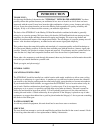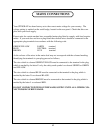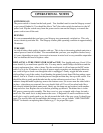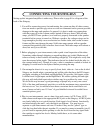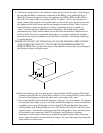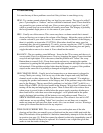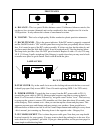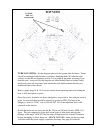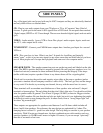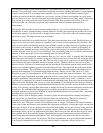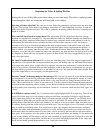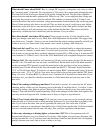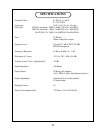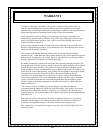
SIDE PANELS
Any of the input jacks can be used with any hi-fi RCA outputs and they are electrically identical
and only differ in how we labeled them.
CD - Plug in your audio outputs from your CD player or "D to A Converter" here. Kind of
obvious. A good spot for the main L & R signals from a DVD deck. Do not patch lines marked
"digital output, SPDIF or AC-3 here though. These are un-decoded digital signals and not audio
(yet).
VIDEO - Audio actually, from a VCR or Laser Disc player's audio outputs. Again, watch out
for AC-3, video output and S-video.
TUNER INPUT - Connect your FM/AM tuner outputs here. Another good input for a second
VCR too.
AUX - Plux your Aux in here -What is an Aux?. It stands for Auxilliary and basically
means "extra", so this is just an extra input for any other source that we didn't label or you have
two of. Most people use it for tape deck playback and some use it for computer audio.
SPEAKER POSTS - The speaker connection posts are on the top panel and labeled on the side
panel. The RED is positive and black is negative (ground). Be sure you have speakers (or a 4 to
8 ohm load resistor) connected to these terminals before powering the Stingray. Tube amps
(unlike solid state) require a speaker if there is any chance there will be a signal applied.
Watch out for reversing the positive and negative wires either at the amp or speakers (unless
you want to simulate record company executive's office hi-fi). The lows get lost, and the image
is very weird. If in doubt, try reversing one channel, the way with the most lows is correct.
These terminals will accomodate most thicknesses of bare speaker wire and most U shaped
terminals or banana plugs. The only thing that they don't like is thin wire. You should avoid thin
wire for speaker cables in general. Use at least 18 guage (18AWG) or heavier. Bigger wire has
smaller AWG numbers. Be sure that the top bolts are tight, but avoid over-tightening that might
be difficult to undo or may damage the posts. In other words, firm as "strong finger tight" but
less than "big wrench tight".
These outputs are appropriate for speakers rated between 3 and 10 ohms which includes all
those 4 and 8 ohm speakers. For reference, the amp design was optimized for 5 ohms. The
damping factor is about 10 - good for a tube design. The only thing to consider is your speaker
sensitivity. With 50 watts per channel max, the best combinations are with sensitive and very
sensitive speakers, ie 90 dB/1watt/1 meter or higher. Of course, if you can accept "quiet only"
then this is not much of an issue.
11



